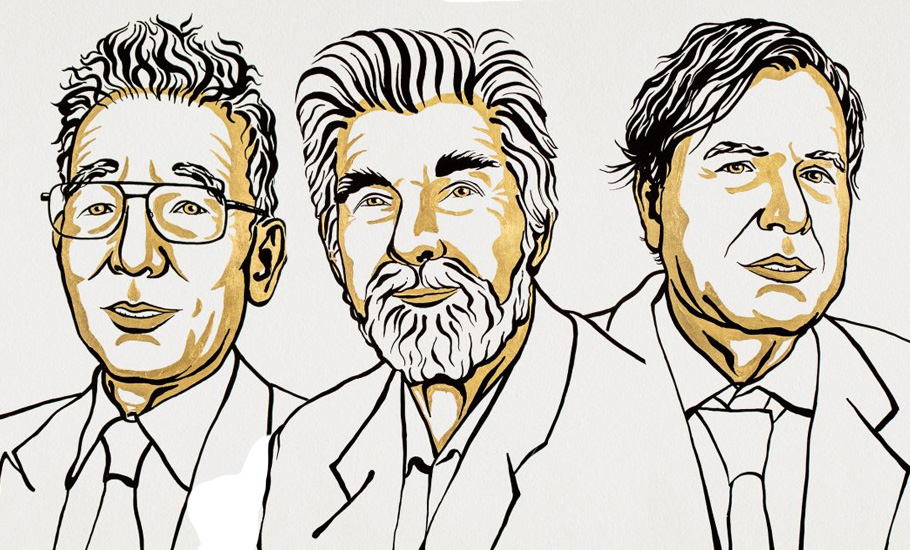
Here’s what Nobel prize winners for Physics did to deserve the honour

The Nobel prizes are announced in the first week of October every year. The enthusiasm in the scientific community, about who will win, reaches its zenith as the day of declaration nears. A lot of politics and international manoeuvring goes on among prospective candidates, institutions they represent, and even the countries they belong to. Since lot of prestige is associated with these prizes, expectations too grow high.
On October 5, the Nobel Prize for Physics was declared which came partly as a surprise and on unexpected lines. In Physics, the rumour mill was going around several potential areas and personalities. This time discussions were going around personalities associated with astrophysics, cosmology, photonics and material sciences. Also, there was hope that statistical mechanics related work might catch the Committee’s attention.
Many were surprised with the names of winners this time: Prof Syukora Manabe, Prof Klauss Hasellman and Prof Georgio Parisi.
Prof Manabe and Prof Hasellman will each take one fourth of the share while Prof Parisi will get the rest of the prize money.
Their work revolved around climate change and global warming. This is the first time climate change modelling has won the prize for Physics. Earlier IPCC and Al Gore got recognition for peace, and this time climate modelling reliability was cited for Physics.
The citation records as: Syukora Manabe and Klauss Haselmann “for the physical modelling of Earth’s climate, quantifying variability” and predicting global warming.
For Georgio Parisi, it was “for the discovery of the interplay of disorder and fluctuations in physical systems from atomic to planetary scales.”
Climate change is a complicated issue; several forces affect the outcome of the research over a long period of time. Some outcomes have short-term results too, which explains the periodical floods and droughts that we have been experiencing of late. Can one mathematically model the climate with only those forces (like CO2 content, as well as others like methane, water vapour, etc) contributing as measure of global warming? Will this predict what will be the average temperature 50-100 years thence? These questions can now be answered with conviction because of the models created by these physicists.
Secretary of Royal Swedish Academy of Sciences (which announces the prize) G. Hansson declared that this prize recognises ‘modelling climate is based on solid physical theory and well-known physics.’
Also read: Nobel physics prize goes to 3 for work on climate change
Syukora Manabe, the Japanese born 90-year-old, is associated with the Princeton University in US. He was the first to successfully model climate change and global warming. He could successfully identify the basic physical processes which contributed to global warming, and is considered a pioneer in the numerical modelling of the earth’s climate. His book: ‘Beyond Global Warming’ co-written by A J Brocolli, correctly identifies the human causes of global warming and how numerical models with very powerful computers played an important role in drawing these conclusions.
Klauss Hasselmann, 89, an Emeritus Professor from Germany, has through decades of study provided solid evidence that day to day weather can remain unpredictably chaotic, but still the warming can be quantified and can be attributed to human causes. His book: ‘Reframing the problem of Climate change: From Zero sum game to win-win solutions’, offers clear insight into the questions and provides an evaluation of science and the policy debates.
The third winner, Prof Giorgio Parisi, was expected to win the prize from many years now, because of his brilliant work in several areas of theoretical physics. After winning the coveted prize, Prof Parisi himself declared in his imitable style: “I was not expecting to win, but there was always a non-eligible chance.”
The 73-year-old physicist from Sapienza University in Roma, has touched upon several areas like Quantum Field theory, Statistical Mechanics and Complex systems. Guido Altarelli and G Parisi’s evolution equations in QCD play an important role in high energy physics. His exact solution of spin glasses is a remarkable achievement.
Around 1980, Prof Parisi discovered hidden patterns in disordered complex materials. His discoveries are among the most important contributions to the theory of complex systems. They make it possible to understand and describe many different and apparently entirely random materials and phenomena, not only in physics but also in other, very different areas, such as mathematics, biology, neuroscience and machine learning.
Also read: Benjamin List, David MacMillan win Chemistry Nobel for new way to build molecules
Professor Parisi won the Dirac medal given by Abdus Salam International centre for Theoretical Physics (ASICTP) in 1999. His achievements put him in the list of potential Nobel winners several years back. Prof Parisi is an activist and was inclined towards the left politics of Italy. He led a movement known as “Salviamo la Ricerca Italiana” to put pressure on Italian and European governments to support basic research substantially. This can be compared with the ‘March for Science program’, now active in India too, where demands for support for basic science research is growing.
I met Prof Parisi in ASICTP as well as Sapienza University, Roma, and was struck by the simplicity of the man. Normally, he cannot be recognised as a typical professor, with typical style of movement and looks.
It is important to recognise that all the three richly deserve the prize as pioneers in their fields. We can say that this year’s prize has gone to the theory and modelling of complex systems.


